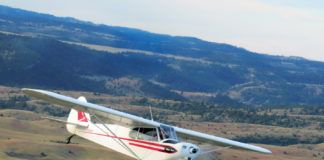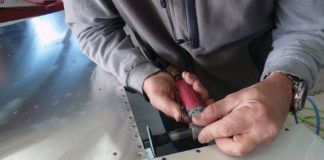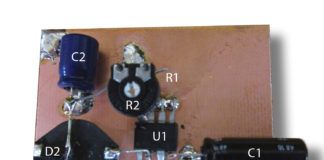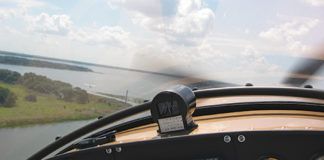Pilots feel passionately about their airplanes, and everyone believes the one they fly is the best. Furthermore, they have anecdotal evidence to prove it. When the flying is done, and the airplanes are all safely back in the hangar, the reality is that everything in aviation is a compromise. Nothing comes without a cost, and the perfect airplane has never been designed, much less built.
Engineers can predict nearly every specification within a few percentage points before a new type ever flies. What cant be predicted, or even described accurately by the engineers, is the way a newly designed airplane will handle, how it will fly. Early in the days of aircraft design the challenge for the engineers was to develop an airplane that was capable of flight, and the challenge for the pilots was to fly it. Anyone who has flown the Wright Flyer simulator knows the handling characteristics of that airplane were horrible. It was unstable in every axis and barely controllable in roll.
Airplanes built in the 1920s had acceptable controllability, marginal stability and horrible control harmony. As aircraft performance improved, the engineers could start to look at how the airplane flew, and they could begin to look at making the airplane easier or more pleasant to fly. As the test pilots and the engineers worked together toward this goal it became clear that one thing missing was a common language.
Flight instructors know that one of the biggest barriers to communication is the lack of a common background. Imagine the scene in the California desert. Engineers with horn-rimmed glasses and slide rules in the pockets of their white coats trying to discuss the finer points of aircraft handling with the test pilot in his sunglasses and flight suit, cracking Beemans gum and waiting restlessly to call it a day so he can head over to Paunchos for a cool frosty.
Engineering Plays a Role
The engineer wants to know about stability for instrument flying, and the test pilot wants an airplane that is maneuverable and will point and shoot. If asked, “How does it fly?” the answer might be, “Wonderful.” The problem is that what is wonderful for shooting guns will most likely be terrible for shooting ILS approaches.
After WW-II a NACA (now NASA) engineer named George Cooper set out to develop a way for pilots and engineers to communicate. It was a system for rating handling that was modified when Cooper teamed up with Robert Harper in 1969 and the Cooper-Harper rating system was born. The Cooper-Harper remains today as the de facto language between test pilots and engineers to discuss an airplane’s handling qualities.
The system rates a pilot’s ability to perform a specific task and puts a numeric value on it. A rating of 10 means that the airplane is incapable of performing the task and control will be lost. A 1 rating means that no pilot compensation is required to achieve the objective.
A test pilot with an airplane and test card full of tasks can go fly and bring back meaningful data to the engineer. The engineer can then modify the airplane and send it back for another flight. Combine “Cubic dollars” with a raging Cold War and things started to improve quickly. On the heels of the X Planes and the Century series jets, the mission at Edwards AFB was to develop the F-15, fly-by-wire F-16 and the space shuttle.
GA Borrows from the Military
General aviation flight-test organizations use the same techniques to design and improve the flight characteristics of light aircraft. The basics of handling characteristics are determined by FAA regulations that specify stability and other handling requirements. After those parameters are satisfied, it becomes a question of understanding what the customer wants.
Many pilots love the rock-solid stability and truck-like feel of the big Cessna singles such as the 182. The Cessnas track heading and altitude like a Labrador retriever on a pheasant scent. Their big tails give them a wide center-of-gravity envelope, and even at their aft limit the elevator forces never get light. The downside of the big, stable Cessnas is that sometimes it feels like two hands are needed to flare.
Other pilots prefer the svelte touch of a V-35 Bonanza, whose ailerons are responsive and quick without being twitchy. The tail is small and contributes to higher cruise speeds. The light elevator allows precise control, and that makes butter smooth landings. The airplane has a nimble sports car feel that is hard not to like. The Bonanza shows its other side in the clouds, in turbulence, or when the cg moves aft. Constant attention is required to keep the airplane wings level and on altitude in bumpy clouds.
A set of test-flight tasks could be developed that would show preference to either type, but both airplanes would score well in any assessment of their handling characteristics. The marketplace confirms this, with both airplanes still manufactured more than 50 years after being introduced. The biggest differentiator in a battle of handling characteristics between those airplanes would most likely be personal preference. Bonanza purists would argue for the Beechcraft handling, but the large population and the wide cg tolerance of the big Cessna singles would make a straight-up vote hard to handicap.
No Burdens
In the Experimental world, aircraft are not burdened with the requirement to meet FAA mandated standards. This flexibility allows for airplanes with more “personality.” It also allows the design of airplanes that require higher performance from the pilot and give higher performance in return.
Unlimited aerobatic airplanes can have very flat pitch force per G gradients. This means the elevator stick force does not increase as the G loading increases. These airplanes are capable of turning square corners at high G loadings with minimal control force. This may be great for blood vessel bursting airshow performances, but these are not airplanes that anyone wants to fly for long cross-country legs, much less instrument flying.
Aircraft handling goes much further than just stick forces, control responses and stability, but those are the most evident and widely discussed aspects of aircraft handling. The RV series of kit aircraft is regarded by many as the gold standard of handling because they excel in both areas. But the RVs are not exempt from the rules of aviation. They also have compromises.
All tandem RVs are front-seat solo. If handling were the only consideration, tandem airplanes would all be rear-seat solo. Front-seat solo airplanes provide much better visibility, panel space for a full instrument panel, and are seen by many as less intimidating to fly. When the passenger sits on the cg there is little change in the cg with or without a passenger. When the passenger sits in back, the combination of passenger and baggage can have a dramatic effect on cg, and hence the pitch force gradient.
High pitch force gradient is one requirement the FAA uses to keep the wings on an airplane. In any airplane above its maneuvering speed (Va) the elevator control can be called the “wing removal lever.” That means if the lever were abruptly pulled to its stop, the potential exists to break the wings off the airplane. In the many standard category airplanes the primary safety fuse that prevents that from happening is human strength. The pitch force gradient is steep enough that the average pilot could not easily pull that hard. Kit aircraft are a different story.
RVs are feather-light in all axes, and that makes them a dream to fly. If the cg limits are respected, the pitch control forces are light but acceptable, even with a passenger. The problem is the airplane has excellent performance and will haul nearly anything that will fit in it, and that tempts pilots to haul passengers and baggage in the RV that put it well behind the aft limit of the cg range.
The reason the pitch forces become lighter as the cg moves aft is simple. The cg in a conventional airplane is ahead of the center of lift (cl). As the cg moves aft, these points move closer together, which means that the amount of force required to rotate the airplane around the cg is less, so less elevator deflection is required to change the pitch of the airplane.
Flying any RV, and especially one with an aft cg, pilots should always remember that statement about the wing removal lever and treat it accordingly. But pulling the wings off is not the only concern about flying an aft-cg airplane.
There is more than one way to change the distance between the cl and the cg. Increasing the angle of attack moves the center of pressure forward. In most airplanes burning fuel moves the cg aft. With all those factors, consider this scenario. Load up a nice, light, 160-horsepower, wood prop RV-8 with a passenger and some baggage. The cg is a little behind the aft limit, but its been flown like that before without too much difficulty. On takeoff the pitch control is sensitive but manageable. Fly for a couple hours and burn off some fuel. The cg moves aft during the flight as the fuel is consumed. Now it is time to land. Decelerating on final, the pitch becomes increasingly sensitive as the cl moves closer to the cg. The airplane can seem wild. Minute stick movements yield large pitch oscillations. It can get spooky.
Touch the mains down on a taildragger in this configuration with too great a descent rate, and the stage is set for a crow-hopping pilot-induced oscillation that ends with the airplane on its back. Slowing further to make a three-point landing moves the cl and cg even closer, making the pitch more squirrely and risking an unrecoverable aft-cg stall. Its a bad situation.
When an airplane design is flight-tested, engineers ballast the airplane to slowly move the cg aft. At each new cg station the engineers specify and the test pilots fly extensive tasks, rating the aircraft handling and control until the Cooper-Harper numbers get past a 3, and that defines a limit. If that limit doesn’t allow the airplane to complete its mission, the airplane gets redesigned.
Free from the limitation of stick force gradients and other certification requirements, kit aircraft such as the RV series can offer the performance and feel of a jet fighter. The compromise is that higher performance comes with a price, and the pilot must perform at a higher level.
One of the perks of building and flying a kit airplane is getting to play both test pilot and engineer. It seems like a simple task, throw some sandbags in the back of the new RV and go fly. It is simple because the purpose is not to expand the envelope, but merely to verify the performance of a previously defined envelope. Expanding the envelope is a different story. It requires knowledge, discipline, patience, and the checks and balances between the engineer and the test pilot. It is difficult to achieve checks or balances when the test pilot and the engineer are the same person.
Continuing the Debate: A Personal View
Sit down at the airport coffee shop and ask the question: “What is the best handling airplane?” Make sure there is at least one Bonanza pilot and an RV driver or two for some spice. A Cub pilot will make sure nothing is decided too fast, and you have the recipe for an all-day discussion. Unfortunately, there is no easy answer to that question. For me, this year marks three decades and many thousands of hours in more makes and models than I can remember. I have been richly blessed with the incredible opportunity to fly so many different and unique airplanes that the “favorite” question comes up often. It is a really tough one, but here goes.
The Fighters
If the technology existed to accurately survey every pilot in America about which airplane they would most like to fly, the North American P-51 Mustang would have to rate near the top. It is a visceral airplane. The cockpit is cramped by any standard. And although it is a protected secret among Mustang pilots, it is an easy airplane to fly. It has torque and it requires rudder, but with proper trim it is not overwhelming. The thing about the Mustang is, more than nearly any other airplane, you feel like you’re wrapped up in it. The engine is right at your feet, the exhaust stacks are barking just ahead of the canopy, and you can feel the engine making the power.
The flight controls are fairly heavy, and every change of power or pitch requires both rudder and elevator trim adjustments. The ailerons are well balanced with the elevator until the speed comes up. Above 300 mph the ailerons become incredibly heavy, and using two hands is common.
The Mustang doesn’t really fly, it carves a smooth path through the sky, and nowhere is that more evident than on landing. It comes down final on rails, and the big wide gear rolls straight as a string down the centerline with only the slightest guidance from the pilot. It is a wonderful airplane.
The Corsair is the most beautiful piece of industrial art ever conceived. Where the Mustang is a study in simplicity, the Corsair is incredibly complex. Its an engineering marvel with a cavernous cockpit and the massive engine hidden far away from the pilot up in the nose. The cockpit is quiet by WW-II fighter standards, and the controls are feather light both on the ground and in flight. The airplane feels big. The visibility is terrible until the tail comes up, and then it is superb. The big fat wing looks and feels forgiving, but it is a lie. It stalls abruptly with little warning. If the Mustang makes you feel like you’re dangerous to others, the Corsair makes you feel safe from them. Who would dare to tangle with a machine as formidable as this? The Corsair flies effortlessly. Its inertia coupled with its power will finish nearly any maneuver you begin. It goes fast because it has the power to overcome its awesome amount of drag. Finding the ground is easy because the big, long oleos have no rebound. They arrest the descent rate like a whoopee cushion, and bad landings are rare.
The Hellcat is the plow horse of WW-II. Its fat fuselage is neither elegant nor sexy. It is the easiest of all to fly; neither light nor responsive, it flies, well, like a plow horse. The stick is uncomfortably low to clear room for the plotting table that pulls out of the instrument panel. Pilots had to keep track of the ship to find it when the mission was complete. Yes, the ship was moving, and there was no radio beacon to find it in the middle of the ocean when returning
low on fuel.
The Hellcat is predictable. It will turn nearly any corner you ask of it. Ask too much, and it will shake like a wet dog before the wing lets go of the air and it stalls straight ahead. It has a wide gear and long oleos for landing on a pitching ship and oft en rewards pilots with better landings than they deserve.
The Heavies
The DC-3 is the airplane that made air travel practical. That would be enough to make it a classic but aside from what it did for aviation, the Goonie Bird, or Goon, has more personality than any other. More than flying it, you come to terms with it, kind of open a dialog. If you try to push it around, it will push back. It is quick in pitch and slow in roll. Both controls feel like they are attached to bungees that move the controls, but there are none. Cables directly connect the controls, but after a control input the response comes in due course.
The Goon is a swept-wing airplane and stalls like one; if the cg is aft at all, there is no warning whatsoever, followed by a wing drop that can exceed 90 instantly. It is the only thing the Goon does quickly. Landings are pleasurable as long as the excursions are checked early. If the tail starts to swing, the beautiful lady gets really ugly.
The Mitchell is the airplane that Jimmy Doolittle chose to launch from the Hornet to bomb Toyko when we had no other way to reach it. The B-25 is an amazing airplane that does nearly everything well. It flies wonderfully. Heavy but responsive, it will do anything asked of it and is easily anticipated. The B-25s success was largely because it was easy to fly. The low-time pilots in WW-II could quickly become comfortable flying the airplane and focus their efforts on fighting.
The B-25 has typically aggressive North American stall characteristics, but stalls so slowly it isn’t really an issue. Not without demons, the critical single-engine speed is 145 mph, which makes an engine failure on takeoff a big problem, and its tender nosewheel must not be abused.
The PBY Catalina, with 105 feet of wingspan, non-existent vertical stabilizer and bulbous bow, tells the story of how the “boat” flies. The ailerons are nearly as big as the wings of a Cub and any deflection generates adverse yaw, which drags the nose opposite the aileron input. With 1400 square feet of wing, the airplane is as much glider as airplane.
The Boat cruises at 100 knots, and approaches to land are made at 80. That is right in the bottom of the drag bucket, so if you push forward on the yoke you speed up and descend, and if you pull back on the yoke you slow down and descend. Either way, unless you add power, you go down.
Which is my favorite? “Whichever one Im flying.” Whether it is an L-2 Taylorcraft, Twin-Beech, a B-25 or a Corsair, all of them have personalities that are to be appreciated. That said, a really light RV-4 with a wood prop flown solo would score all “1s” on my test card.













